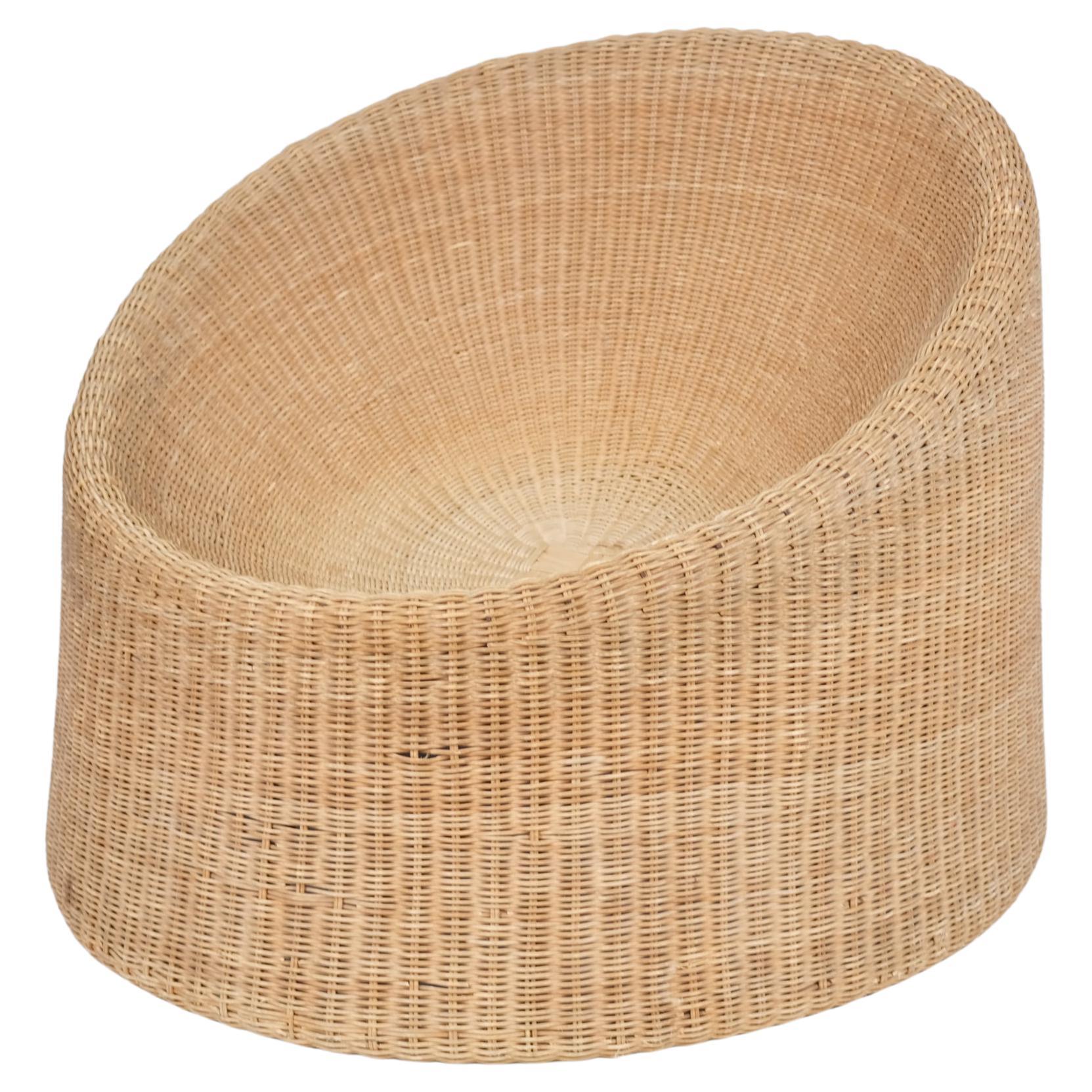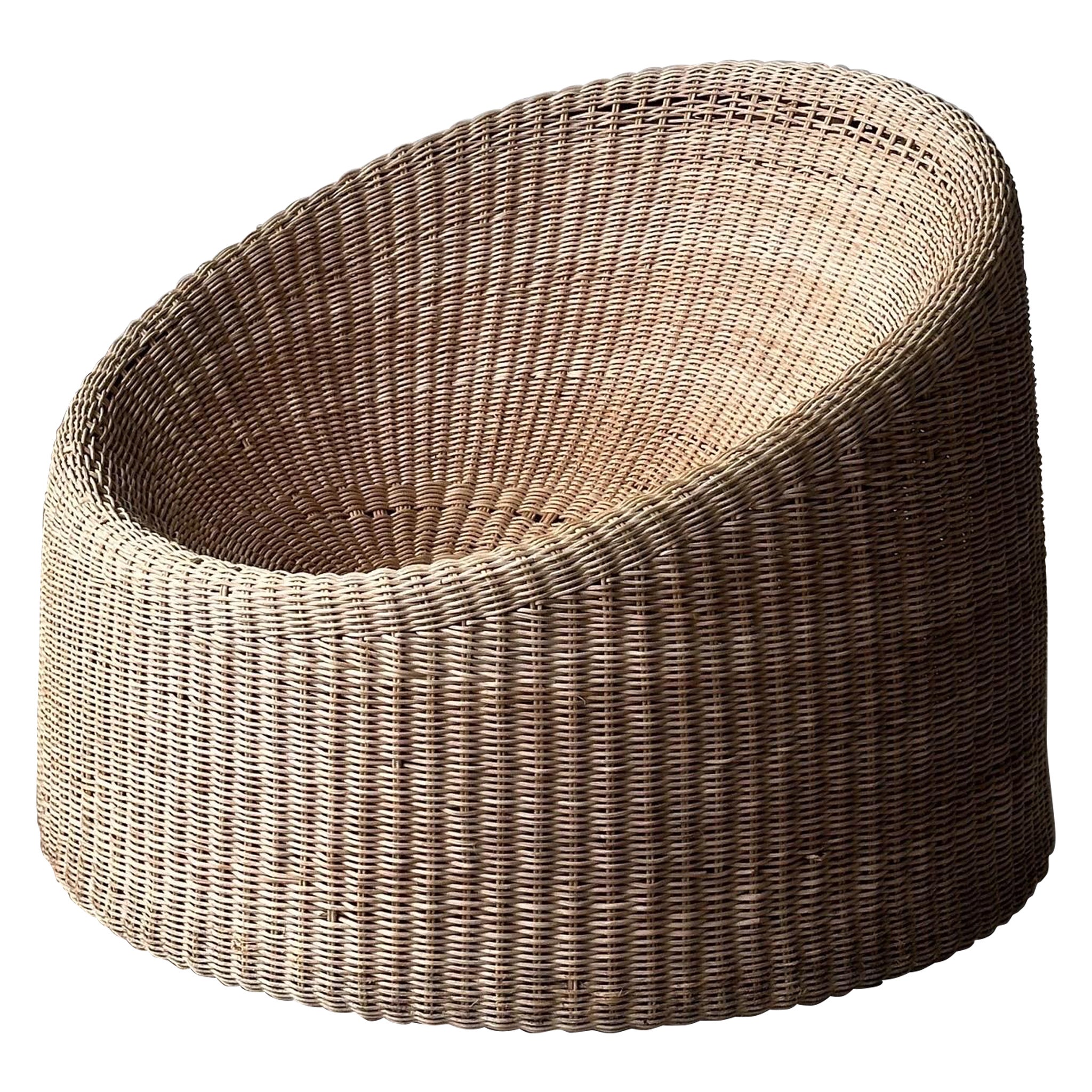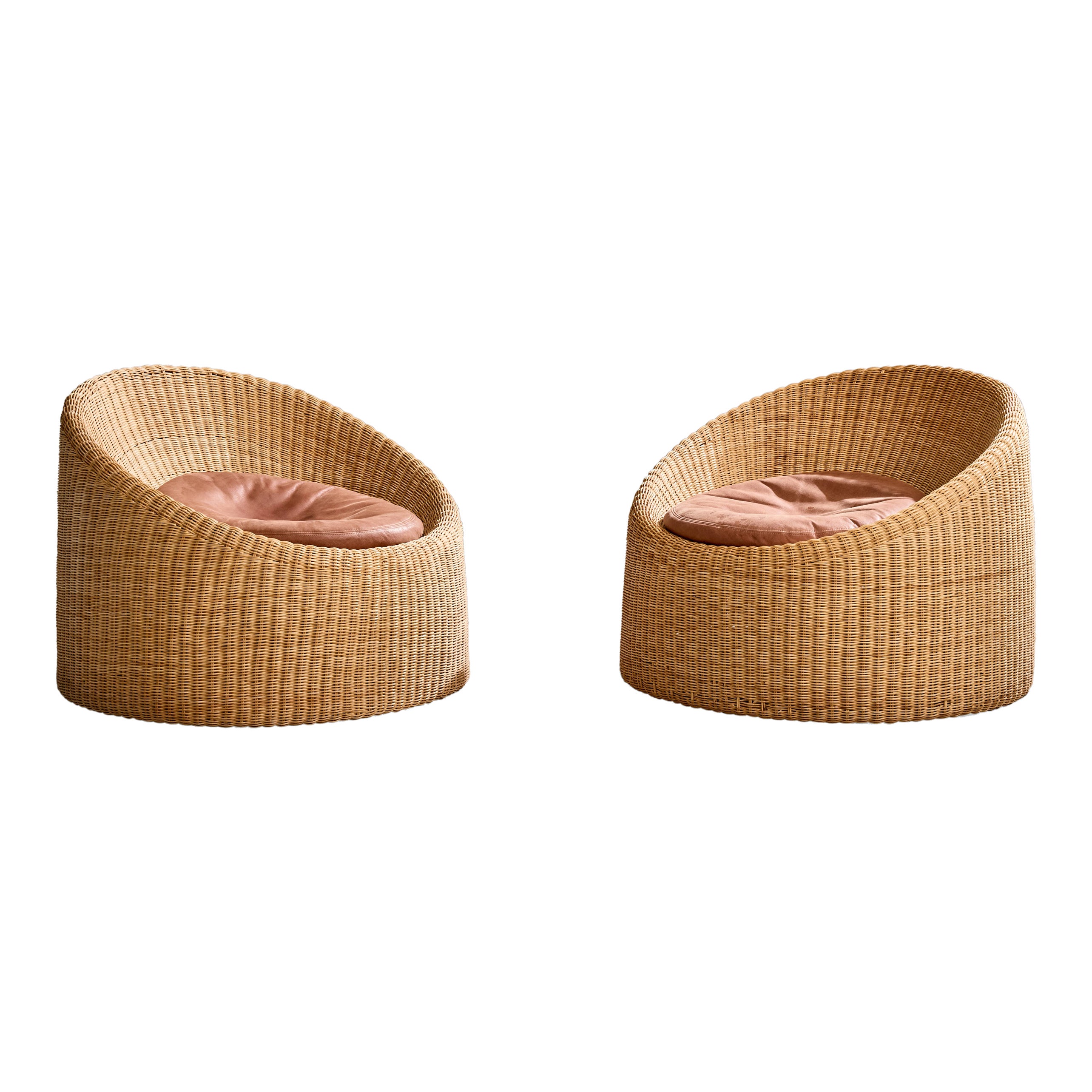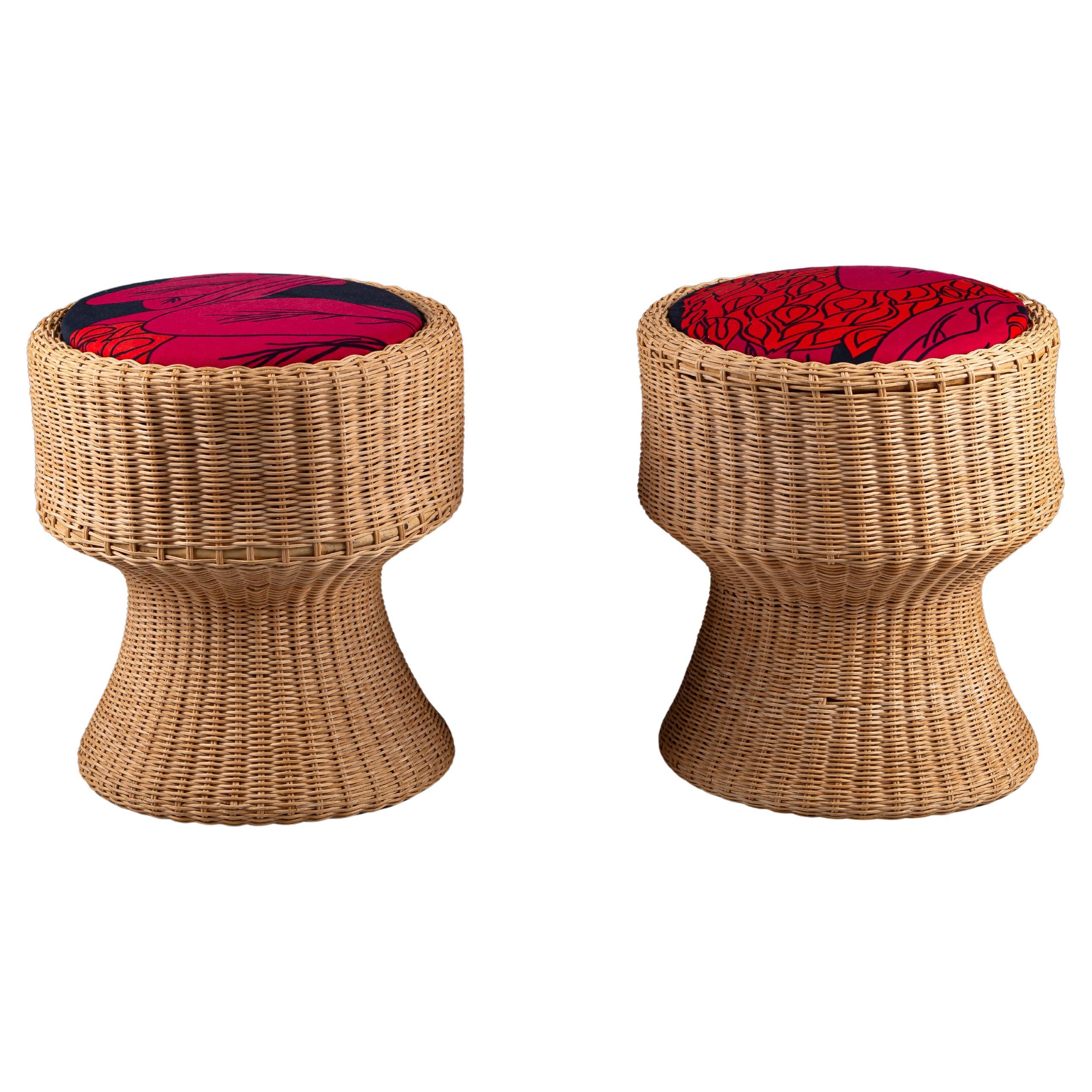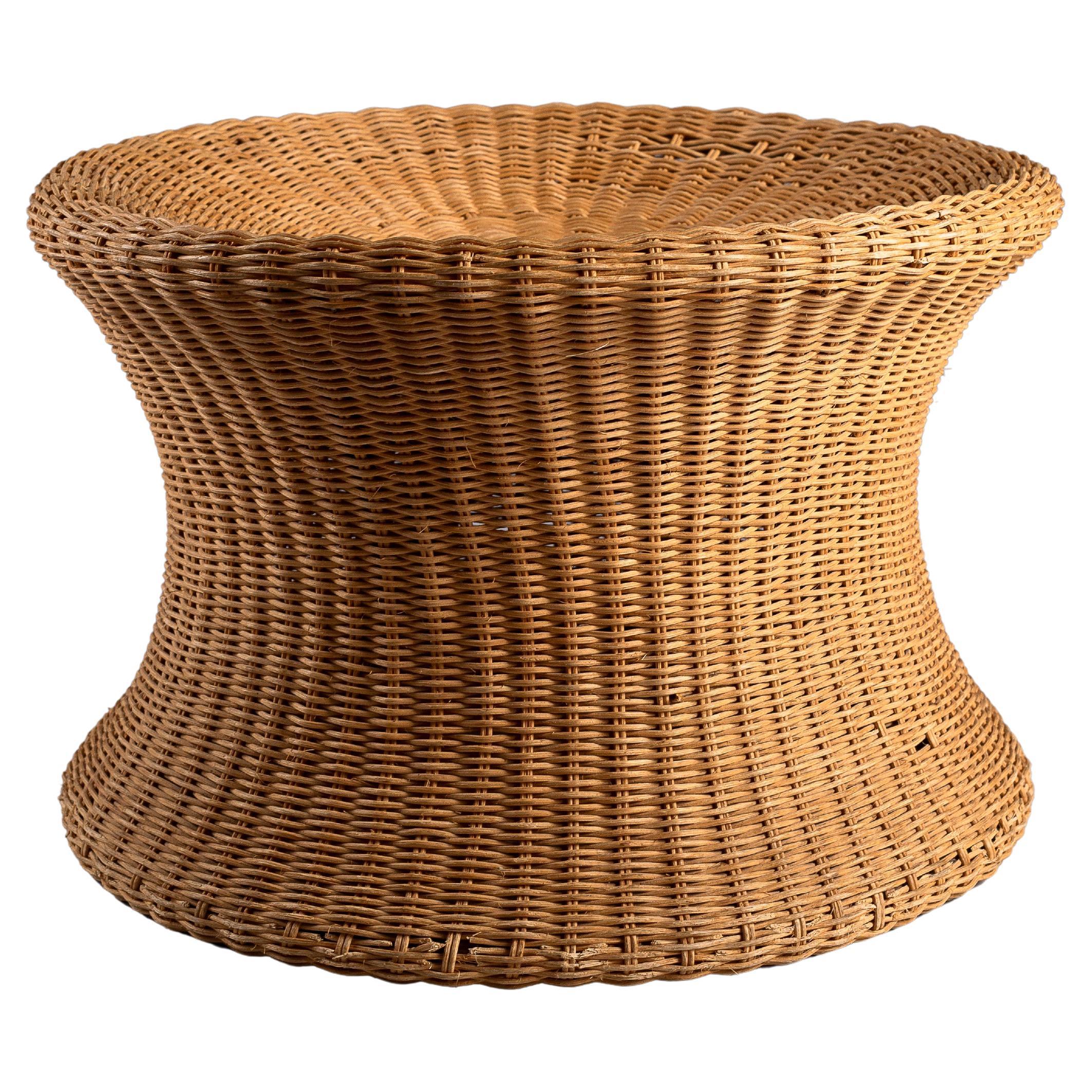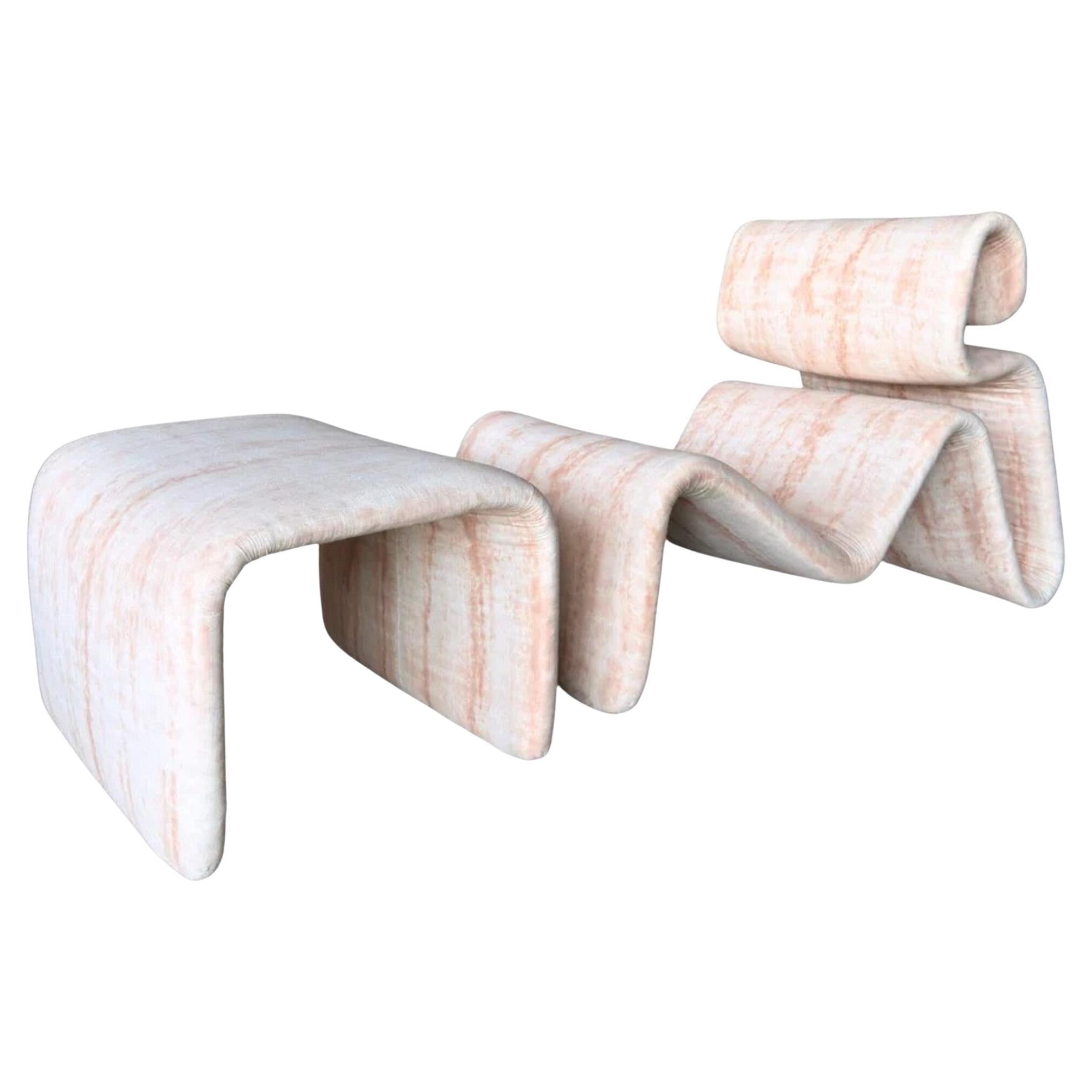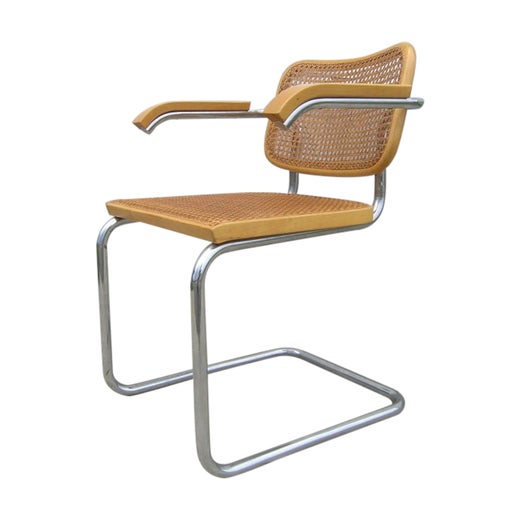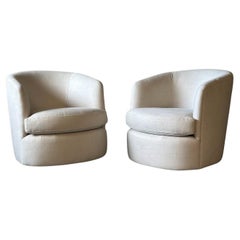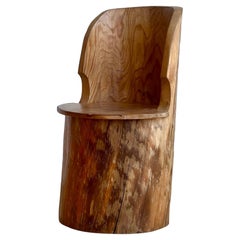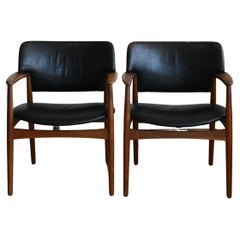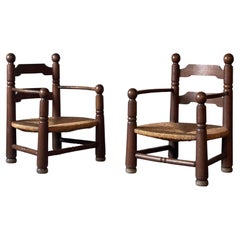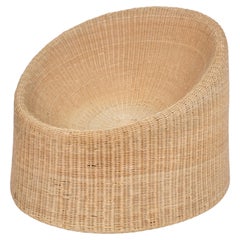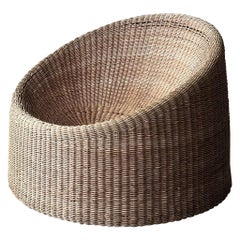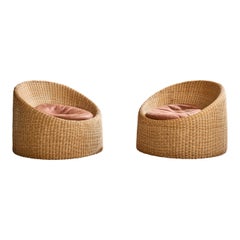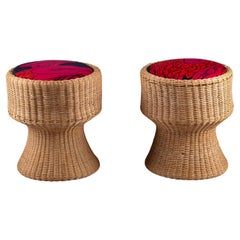Eero Aarnio Elephant Boot Chair and Juttu Stool
About the Item
- Creator:Stendig Co. (Manufacturer),Eero Aarnio (Designer)
- Dimensions:Height: 26.5 in (67.31 cm)Diameter: 34 in (86.36 cm)Seat Height: 18 in (45.72 cm)
- Sold As:Set of 2
- Style:Mid-Century Modern (Of the Period)
- Materials and Techniques:
- Place of Origin:
- Period:
- Date of Manufacture:Circa 1960
- Condition:Wear consistent with age and use. Excellent vintage condition.
- Seller Location:Hudson, NY
- Reference Number:1stDibs: LU9753241492252
Eero Aarnio
“I always look ahead, never back,” Finnish design legend Eero Aarnio has been quoted as saying. A leading innovator of modern furniture design, Aarnio has long embraced a bold, playful, confident and colorful style several steps ahead of his time.
For his 1954 entrance test for the Institute of Industrial Arts in Helsinki, Aarnio created a whimsical painting of a man reading a newspaper in a red, curved chair whose silhouette foreshadowed Aarnio’s Ball chair of 1963. That spherical seat skyrocketed him to design fame, and decades later, it is still recognized as one of the world’s most futuristic designs.
Born in 1932 to a house painter and a seamstress, Aarnio has always had a cheerful disposition and an independent spirit. He went his own way early on: After just two years at Asko, the big Scandinavian furniture company that originally produced his Ball chair, Aarnio established his own studio in 1962.
Over the next decade, the young visionary made an indelible mark on the world. Open-minded and entrepreneurial, Aarnio embraced the aesthetics, materials and technologies of the Swinging Sixties, working with a new generation of plastics and molding them into fluid, organically shaped, brightly hued forms.
Introduced at the 1966 Cologne Furniture Fair, the pod-like fiberglass Ball chair soon adorned the homes of movie stars and royalty, graced magazine covers around the world and was featured in films and ads. The groundbreaking seat originally came in orange, white, black, yellow and red and could be ordered with a telephone installed in it. Yet this designer of the future, as he was known in the 1960s, has always insisted that he didn’t deliberately seek to be associated with the decade’s sci-fi aesthetic.
“I had no intention to create either pop or Space Age design — as many people label my work,” Aarnio declares in one of the essays included in Eero Aarnio — Designer of Colour and Joy, a book jointly created by the Design Museum and publisher WSOY to accompany 2016’s “Eero Aarnio” exhibition.
The show featured a number of Aarnio’s objects, including his iconic Ball, Pastil (1967), Bubble (1968), Tomato (1971) and Pony (1973) chairs. These were joined by lesser-known seating and other objects like the rattan Juttujakkara, or mushroom, stool (1960); the sculptural Double Bubble lamp (2000), with which Aarnio first explored the possibilities of rotation-cast plastic; and the three-legged Rocket (1995) and Baby Rocket (2006) stools, both parts of a collection produced by Artek after Tom Dixon, the company’s creative director from 2004 to 2009, discovered the original piece in Aarnio’s kitchen.
“Aarnio expanded the whole idea of what constitutes furniture,” explained Suvi Saloniemi, the Design Museum’s chief curator. “His significance as a designer is crystallized in the liberation of form that he has introduced by discovering the properties of plastic as the material of a designer. His furniture is sculpture-like and eye-catching, but the pieces are always utilitarian at the same time.”
Find an extraordinary range of vintage Eero Aarnio chairs, tables and other furniture on 1stDibs.
Stendig Co.
Stendig Co. played a pivotal role in introducing modern European furniture to the American market, thanks to the business acumen of founder Charles Stendig.
Around 1950, the Brooklyn, New York–born Stendig (1924–2024) worked for Raymor, a purveyor of modern china and accessories that is best known for distributing designer Russel Wright’s American Modern line of ceramics. While at Raymor, Stendig focused on the company’s less popular pieces that were made in Italy and Scandinavia, recognizing their potential for the American market. In 1955, he left the company and decided to establish Stendig Co.
That year, a chance encounter with a Finnish trade representative led him to furniture company Asko — one of the largest companies operating in Scandinavia. Asko invited him and Joseph Carreiro, a professor at the Philadelphia College of Art (now the University of the Arts), to help refine their designs.
At Asko’s production facility in Finland, Stendig met several renowned Finnish designers such as Ilmari Tapiovaara, Tapio Wirkkala and Eero Aarnio, the iconic Ball chair creator. Stendig’s trip there was a success, and Stendig Co. began importing Finnish furniture to the United States.
In 1956, the first Stendig Co. showroom opened in Manhattan. A year later, during a trip to Zurich, Stendig came across a Bauhaus–inspired furniture store featuring pieces by Swiss designers Kurt Thut, Hans Eichenberger and Robert Haussmann, the store’s co-owner. Following a meeting with Haussmann, Stendig became the retailer’s exclusive U.S. distributor.
Throughout the late 1950s and early 1960s, Stendig Co. imported and sold furniture from influential European designers, including Swiss designer Bruno Rey, Italian architect and industrial designer Vico Magistretti and Hungarian-American architect and designer Marcel Breuer, creator of the Wassily lounge chair.
By the late 1960s, Stendig Co. moved its headquarters to an expansive space on Manhattan’s East Side and opened showrooms in Los Angeles, San Francisco and Chicago, each home to the company’s striking collection of mid-century European armchairs, sofas, dining room chairs, coffee tables and other furnishings. Stendig’s founder was by then representing Italian manufacturers Poltronova and Gufram and bringing revolutionary works of Italian Radical design to American shores.
In 1971, Charles Stendig sold the company to Burlington Industries. He retired in 1976. Today Stendig’s European imports are coveted by interior designers and vintage furniture collectors, and he will be forever known as the man who introduced modern European design to the United States.
Find a range of vintage Stendig Co. furniture on 1stDibs.
- ShippingRetrieving quote...Shipping from: Coxsackie, NY
- Return Policy
More From This Seller
View AllMid-20th Century European Art Deco Swivel Chairs
Linen
Antique Mid-19th Century Scandinavian Primitive Chairs
Pine
Vintage 1960s Danish Mid-Century Modern Chairs
Leather, Teak
Mid-20th Century French Art Deco Armchairs
Rush, Oak
Vintage 1940s American Scandinavian Modern Chairs
Canvas, Wood
Antique Late 19th Century Swedish Primitive Armchairs
Oak
You May Also Like
Vintage 1960s Finnish Scandinavian Modern Lounge Chairs
Rattan
Vintage 1960s Finnish Adam Style Chairs
Bamboo, Wicker
Vintage 1970s Finnish Mid-Century Modern Lounge Chairs
Leather, Rattan
Mid-20th Century Finnish Mid-Century Modern Stools
Wicker, Rattan
Mid-20th Century Finnish Mid-Century Modern Stools
Wicker, Rattan
Vintage 1970s Swedish Post-Modern Ottomans and Poufs
Steel
Read More
The 21 Most Popular Mid-Century Modern Chairs
You know the designs, now get the stories about how they came to be.
The Ball Chair, Eero Aarnio’s Space Age Masterpiece, Was Almost Never Made
Now considered emblematic of 1960s mod aesthetics, the Finnish designer's famous creation was far from an overnight success.
